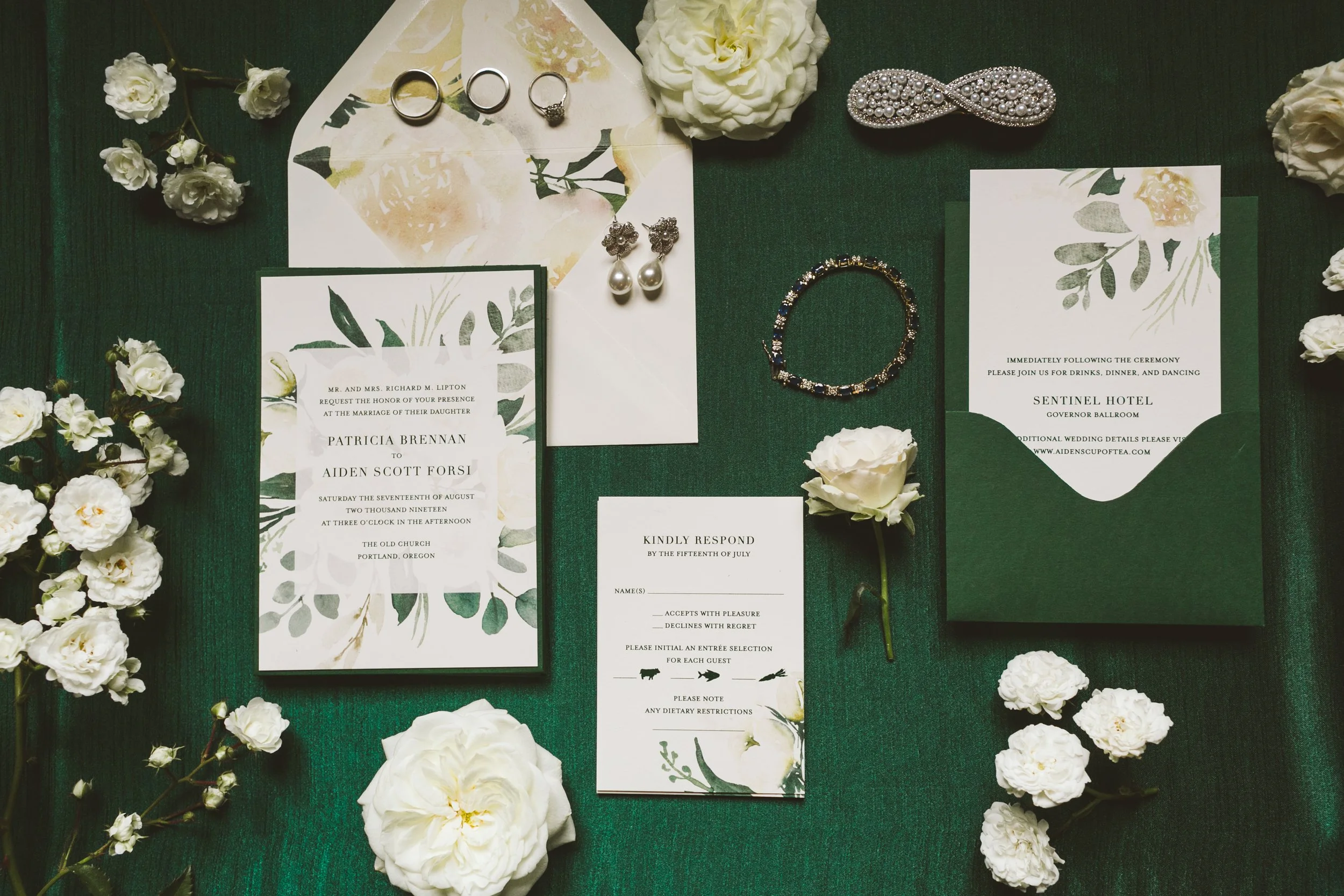Invitation Wording and Etiquette
Invitations and RSVPs are one of the most important planning tools for any event. These cards hold quite a bit of important information and allow your guests to understand everything from day of details to dress code, etiquette, and more! As you start to think about the design, wording, and layout of your stationery needs, we’ve laid out a few helpful tips to make drafting up your invitations a breeze:
The Basics
Most invitations will contain the following items: Outer Envelope, Invitation Card, RSVP Card, RSVP Envelop, Details/Information Card however, with the increased popularity of wedding websites, online RSVPs, and more, each invitation suite can be completely different based on the couple and their needs, the venue, or the specific information they want to share with guests. Some couples will forgo the RSVP card and include their online link on the Details Card, while others will simply keep all information on one main Invitation Card. Typically invitations should be sent out anywhere from 8-10 weeks prior to wedding day, however in an extremely busy wedding year (like 2022) we recommend aiming more towards 10-12 weeks.
The main rule of thumb is, the more pieces included in your invitation suite, the more each invitation will cost. From the weight of the paper to the size of the invitation, there are many elements that can lead to an increase of postage for each invitation.
Insider recommendation: Assemble one complete invitation and take it to your local Post Office or mailing center to have it weighed and confirm that amount of postage needed for each. The Post Office usually has many unique seasonal stamps that you can mix and match based on your color scheme or style. Be sure to keep an eye out when specific stamp collections are in season or check Etsy for vintage pieces to layer and stack together. Don’t forget about stamping the Inner RSVP Envelope too!
rsvp cards
RSVP cards should be due at least one month prior to your wedding date. For example, if your wedding is on August 5th, your RSVP due date should be July 5th so that you have ample time to track down any outstanding RSVPs. You will also want to make sure the RSVP is easy to read and has plenty of space for guests to write on. Traditionally, RSVPs include a line with an "M" which stands for "Mr." or "Mrs." We typically recommend changing this to read "Name(s)" as it is more clear to your guests and is much more gender neutral.
If you are including families and children it’s best to have a line below the attending box that reads "Number attending" where your guests can write out the exact number of people attending. When you collect entree choices for guests, we recommend writing, "Please initial an entree selection for each guest" and then listing out the various entrees. We have found this to be the most accurate way to track meals and ensure that everyone gets their preferred meal and can note any dietary restrictions.
Pro Tip: Consider also discreetly numbering the back of your RSVPs with a light pencil or blacklight pen to coincide with your guest list spreadsheet. If an RSVP arrives illegibly or with no name at all (you would be surprised how often this happens!) you will still be able track it without the hassle of reaching out to every outstanding RSVP on your guestlist.
invitation assembly
When assembling your invitation suite, be sure to arrange each card or envelop in the order you will want your guest to open and read. Typically suites should be arranged in the following order: on the bottom, your Invitation, on top of that, the Reception Card, next any other enclosure cards, and finally the RSVP on top. You can then insert the fully assembled invitation suite into your outer envelope (left edge first for a single card invitation; folded edge first for a folded invitation). Check out this throwback video of our very own, Elizabeth, walking through invitation assembly, stuffing, and stamping:












